If you toddler is doing any activity near open water, they need a life jacket. Period. Unfortunately, a lot of water activity operators (think kayak or canoe rentals) don’t have toddler-sized life jackets: you’ll have to bring your own.
Finding a life jacket for toddlers can be tricky and confusing. There actually aren’t that many options out there. And the safest options are usually the least comfortable. If the life jacket isn’t comfortable, your toddler might complain about wearing it. That can make what’s supposed to be a fun activity into a whine-fest.
Below are some of the best toddler life jackets that are actually comfortable, and meet all of the USCG safety requirements.
Best Life Jackets for Toddlers
All of these toddler life jackets are US Coast Guard approved for babies and toddlers up to 30lbs. They are all also Type II (which means they will help turn a child onto their back in the water).
1. Stohlquist Infant Life Jacket
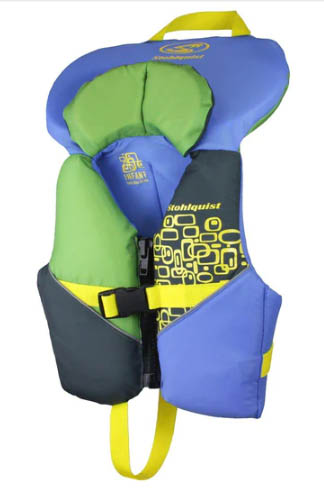
Features:
- Type: II
- Material: Nylon
- Closure: Zipper, 1 front buckle, 1 back strap, crotch strap
- Get It Here
This gets our pick as best infant life jacket for a few reasons. For starters, it is actually a Type II infant life jacket. (Note that the child size is type III). It will help turn a child on their back. It is also rated for Boating, Water Skiing, Fishing, Kayaking, Rafting.
The design of the life jacket is also really nice. It isn’t nearly as bulky as other life jackets for infants and toddlers (so your kid is less likely to complain about wearing it). There are large arm holes so for movement and even swimming. The double neck rest is comfortable and there are lots of straps for getting the perfect fit. Of course, all of these nice features do mean the life jacket costs more.
Pros
- Comfortable
- Double collar
- Easy on/off
- Open neck and large arm holes for good mobility
Cons
- Pricier option
2. O’Neill Infant Superlite Life Jacket
Here’s a more affordable Type II toddler life jacket. The sizing runs a bit small (chest size up to 24 inches), so it’s best for skinny toddlers. It’s one of the more comfortable life jackets you’ll find for toddlers since the head rest doesn’t push up against their head. However, it’s a bit bulky and limits mobility.
Features:
- Type: II
- Material: Nylon
- Closure: Zipper, 2 front buckles, crotch strap
- Get It Here
Pros
- Thinner and more comfortable design
- Headrest doesn’t push on head
- Affordable
Cons
- Two straps
- Size runs small
- Bulky
- Poor mobility
3. Stearns Infant Classic Series Vest
Features:
- Type: II
- Material: Nylon
- Closure: Zipper, front buckle, crotch strap
- Get It Here
This is one of the most affordable infant life jackets you’ll find while still being a very good quality. The downside is that it’s really bulky and definitely not the most comfortable for your toddler to wear. Note that the Amazon description on Stearns infant life vests is incorrect: they should all be listed as Type II vests
Pros
- Affordable
- Durable
- Large handle for quickly grabbing kids
- Low-cut arm holes improves comfort
Cons
- Very bulky and constructing
- Tight around the neck
4. Stearns Infant Puddle Jumper Hydroprene Life Jacket
Features:
- Type: II
- Material: neoprene
- Closure: Back zipper, 1 front buckle and two crotch straps
- Get It Here
Here’s another toddler life jacket by Stearns. It costs a bit more than the Classic version but is much more comfortable. The sides are made out of a soft, flexible material so your toddler has lots of mobility. The material also means this life jacket will dry faster. It comes in several different cute colors.
Note that this life jacket is NOT rated for boating (just near shore and calm water, so general floatation). Another downside is that it is slightly annoying to put on since the zipper is in the back and the strap off to the side.
Pros:
- Soft and comfortable hydroprene material
- Head flotation doesn’t push on child’s head
- Cute designs
- Double crotch strap for comfort
Cons:
- Not for boating
- Tight around the neck
- Fits weird on taller toddlers
5. Airhead Treasure Infant Life Jacket
Features:
- Type: II
- Material: Polyester
- Closure: Zipper, front buckle, crotch strap
- Get It Here
This infant-size life jacket is ultra cute, Type II and a good price. The downsides are that it is really bulky on babies and toddlers. The head flotation doesn’t lie back well, so it ends up pushing on your child’s head. There also aren’t many straps, so it’s hard to get a good fit. I would really only recommend it for older toddlers who are still under 30lbs.
Pros:
- Durable construction
- Cute designs
Cons:
- Really bulky
- Limits mobility
- Not many straps for adjusting fit
Types of Life Jackets
Life jackets are broken down into types based on their buoyancy and turning performance (more on that later). All life jackets for children under 30lbs are either Type II or Type III.
Type I: Offshore Life Jackets
Type 1 life jackets are also known as offshore life jackets, and they are designed to provide the most buoyancy and the best turning performance of any life jacket type. These jackets are typically used in open, rough, or remote waters, and they are designed to turn an unconscious person face-up in the water and keep them afloat. Type 1 life jackets are the most buoyant type and can provide up to 22 pounds of buoyancy.\
Unfortunately, Type I life jackets do not come in infant (under 30lb) sizes! There are some child-sized Type I life jackets, but even these are hard to find.
Type II: Near-Shore Buoyancy Vests
Type 2 life jackets are also known as near-shore buoyancy vests. These jackets are designed for use in calm or inland water where there is a good chance of rescue. Type 2 life jackets provide less buoyancy than Type 1 jackets, and they are designed to turn most wearers face-up in the water. Type 2 jackets typically provide between 15.5 and 19 pounds of buoyancy.
Type III: Flotation Aids or Buoyancy Vests
Type 3 life jackets are also known as flotation aids or buoyancy vests. These jackets are designed for use in calm water, where rescue is likely to be quick. Type 3 life jackets provide the least amount of buoyancy of any life jacket type and are designed to be comfortable and allow freedom of movement for activities such as water skiing, kayaking, or fishing. Type 3 jackets typically provide between 15.5 and 19 pounds of buoyancy.
Is It Okay for a Toddler to Wear a Type III Life Jacket?
Type III life jackets are generally only recommended for children who are swimmers. Since most toddlers aren’t good swimmers, that means they should wear a Type II life jacket.
However, Type III life jackets are a generally lot more comfortable to wear because they aren’t as bulky. If your child isn’t going on open water, you might consider a Type III life jacket instead. I’m definitely not going to be the one to recommend loosening safety requirements for toddlers on water though!
Other Things to Consider When Choosing a Toddler Life Jacket
Buoyancy Rating
The bold-faced number on a life jacket is the buoyance rating. It’s a measurement of the pounds of gravitational force the life jacket resists. Simply put, the higher the number, the greater the floatation.
Most the toddler life jackets on the market today in the United States are Level 70 life jackets.
Turning Performance
The curved arrow indicates the turning ability of the life jacket. Turning ability is whether or not a life jacket is capable or designed to turn an unconscious person face up, unassisted.
A life jacket with the curved arrow and slash through it will not turn a person right side up. If there is no slash, it will turn most wearers face up.
All Type II life jackets have turning performance. Some Type I life jackets have turning performance. No Type III life jackets have turning performance.
Warnings and Exclusions
The next thing you’ll notice are warnings and exclusions. These are icons which indicate which types of activities and waters the life jacket is suitable for, such as towed sports or boating.
It Must Be US Coast Guard Approved!!!
The United States Coast Guard sets safety standards for all types of personal flotation devices (PFDs). When a life jacket is Coast Guard approved, it means that it has been tested and meets these safety standards for buoyancy, performance, and construction.
For a toddler life jacket, being Coast Guard approved is particularly important because young children are more vulnerable in the water and require extra protection to stay safe. A properly fitting Coast Guard approved life jacket can help keep a toddler afloat in the water, even if they are unable to swim or become unconscious.
In addition, many states and localities require that children wear Coast Guard approved life jackets when participating in water activities.
Comfort and Mobility
Open-sided life vests provide more room for movement, while close-sided vests offer a tighter fit. The neck collar is also important, and there are various designs available, including segmented collars for added comfort.
Other Features of Toddler Life Jackets
These features are not optional for toddler life jackets:
- Padded head supportto help keep the child’s head above water.
- Grab handleto assist retrieving the child out of the water.
- Crotch strap to help keep the PFD from riding up.
- Bright colors: This improves visibility so it’s easier to spot and rescue your child
Sizing a Toddler’s Life Jacket Fits
Do NOT buy a life jacket that your child will “grow into”. Buy one that fits their size and weight right NOW.
Kids’ life jackets are sized according to weight, not chest size (adult life jackets are sized by chest circumference).
- Infant/Toddler: 8-30 lbs
- Child: 30-50 lbs
- Youth: 50-90 lbs
Unfortunately, these weight ranges can make it tricky to get a life jacket for toddlers which are a bit heavier. For example, if your toddler is over 30lbs but still fairly short, the “child” life jackets won’t fit well. You’ll need to look for life jackets which are smaller (not as bulky) but still have the appropriate weight rating.
Note: The more straps a PFD has, the more adjustments can be made for sizing
Testing Life Jacket Fit
- When lifting the child up by the handle or shoulders of the PFD, the child should stay secure within the PFD.
- It should have a secure, snug If it’s too tight, it won’t provide sufficient flotation (you’ll need to move up a size).
- A fastened life jacket or vest should never rise above the face when a child is in the water.
- Make sure the adjustable straps are secure and the crotch strap is tight enough to prevent the life jacket from riding up.
- If the life jacket rides up, it’s likely too large (go down a size).
Image credits: “IMG_0031” (CC BY 2.0) by abbybatchelder
Sources: https://www.dco.uscg.mil/CG-ENG-4/PFDSel/, https://www.reddit.com/r/Parenting/comments/v709s6/recommendations_for_a_child_life_jacket/,


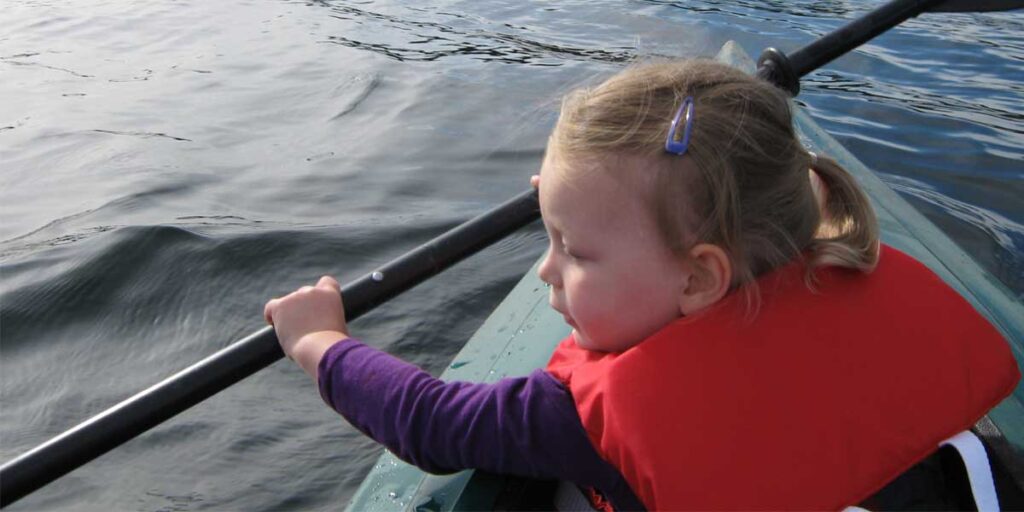
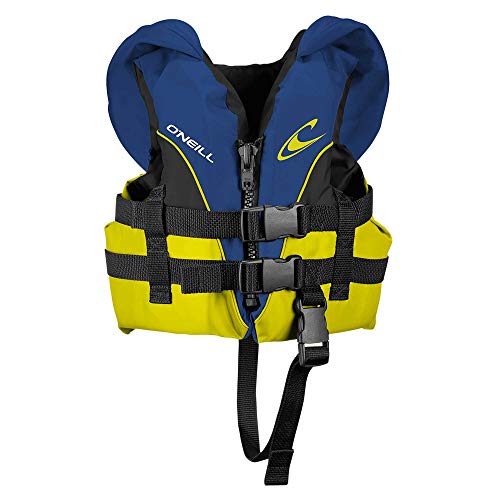
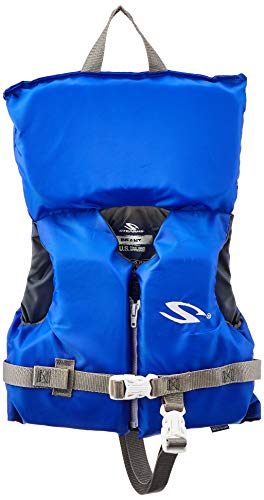
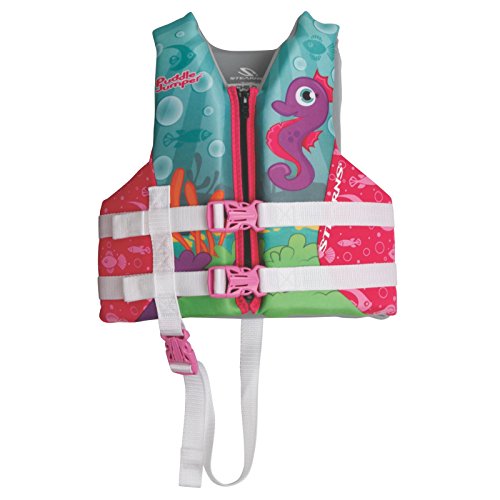
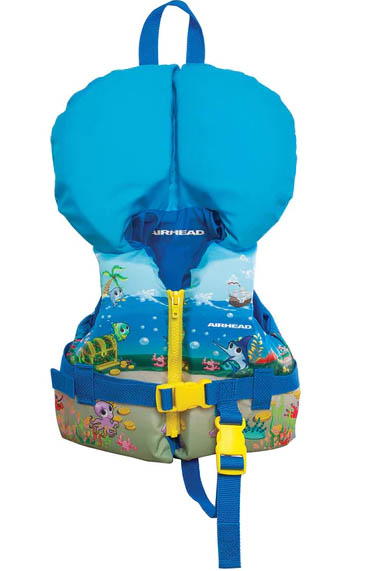
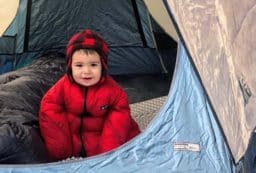
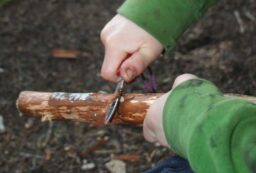
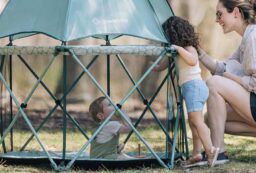







Post your comments